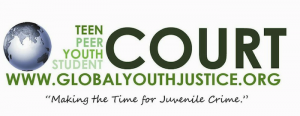The latest Monitoring the Future survey revealed that drug abuse is declining among America’s teens, yet an alarming number of students are still putting their lives at risk by abusing drugs and alcohol. According to the US Department of Health and Human Services, around 50% of teenagers have tried illicit drugs at least once in their lifetime. With illicit drugs, misuse of prescription drugs, and binge drinking providing cause for concern across the US, it’s useful to explore and analyze the importance of drug, alcohol and substance abuse education in schools and to evaluate the impact it has.
The importance of substance abuse education in schools
Education provided in schools plays an instrumental role in educating children and teens about the potential implications of their actions and habitual behaviors. Many parents choose to speak to their children about taking drugs and drinking alcohol, but not every child will receive an education of this type at home. Drug and alcohol education in schools can help to ensure that no child slips through the net, and also offer a different perspective of substance abuse and a different arena in which to share comments, thoughts, or experiences. Some students may be apprehensive about talking to their parents or being honest with them, and school-based activities and programs may be more effective. There are several reasons why drug and alcohol education is crucial in schools. A comprehensive curriculum can provide pupils in middle school and high school with information that could have a significant impact on the choices they make both at school and in the future. Essential factors to consider include:
- Spotting the warning signs of addiction
- Understanding the potential implications of taking illegal drugs or drinking too much and raising awareness of addiction
- Learning about the impact of addiction or illicit behavior on others, including friends and family members
- Understanding how to help others who may be struggling
- Figuring out ways to cope with stress, sadness, or anxiety without drinking or taking drugs
- Providing an insight into the kind of help that is available if you are going through a tough time
The current situation
2018 statistics show that although drug abuse and binge drinking are becoming less prevalent in school-aged children, there is still a long way to go. More than a third of students in the 12th grade smoked marijuana last year, with over 3% taking LSD and 2% trying cocaine. Over 13% of 12th-grade students and almost 9% of 10th-grade pupils admitted to binge drinking. The reality is that despite improvements, there are still hundreds of teens putting their lives at risk. Drug and alcohol education can help to reduce the risk of students falling foul to drugs. This relates not only to pointing out the implications of abusing drugs or alcohol, but also to teaching children to learn to cope with potential triggers for stress, anxiety, and depression and to enable them to adopt positive ways of thinking that give them the confidence to say no to things they don’t want to do or to break a habit.
The impact of drug, alcohol and substance abuse education in schools
Every day you spend in school is a learning experience, but often, curriculums are so focused on mainstream educational classes that they miss out valuable life lessons. Many pupils will have little or no idea about the potential consequences of smoking cannabis or drinking shots of vodka when they try them for the first time. Often, with alcohol and marijuana, which are considered ‘soft’ substances, students assume that there is nothing to worry about, but both of these substances are highly addictive. Drug and alcohol abuse education in schools is vital for providing teens with the information they need to make choices, and equipping them with the skills they need to get by in the outside world where they may be more likely to take drugs or drink too much. Additional programs like Education Life Skills’ Marijuana Prevention course can reinforce school learning and provide additional support for educators and parents looking to help the children in their care. There has been a great deal of debate about the efficacy of school drug education programs in the US in the past, but the National Institute of Drug Abuse suggests that school drug campaigns are effective when they are well-researched and delivered in an engaging manner that takes the target audience into account. The most recent MTF survey suggests that drug and alcohol abuse are becoming less commonplace among students at middle and high school, and this would suggest that school programs are having a positive impact. Figures for binge drinking, for example, have fallen from 31.5% of 12th graders in 1998 to 13.8% in 2018. In addition to school programs, which are implemented as part of the curriculum, other approaches can also offer a solution. In Indiana, the mother of a 16-year-old who died after taking a synthetic drug called 25I-NBOMe, has convinced more than 40 schools across the state to participate in events and activities as part of National Drug & Alcohol Facts Week. Jeanine Motsay, mother of Sam, stressed the importance of providing students with facts and taking steps to bust myths that surround drug and alcohol consumption that are often perpetuated through music videos, TV shows, and movies.
Prevention is better than cure
One of the most important aims of drug and alcohol education programs should be to promote prevention. The National Institute on Drug Abuse suggests that every $1 spent on prevention contributes to a 10-fold saving on drug treatment. One key element is adjusting the mindset of individuals who are compelled to use drugs or drink excessively as a coping mechanism. Education Life Skills’ Captivity- Substance Abuse Prevention course is designed to promote prevention in a way that helps parents and educators to help teens build self-esteem, increase confidence and adopt a way of thinking that eliminates cravings and empowers them to make better choices. We tend to think about school classes as a means of teaching students to read maps or work out equations, but lessons that are focused on educating pupils about the risks of taking drugs and drinking excessively should form an integral part of classes for youths. These sessions, which can be supported by external programs and local and national events and campaigns, provide young people with valuable information, insightful stories, examples and case studies, and advice about seeking help or assisting others.





